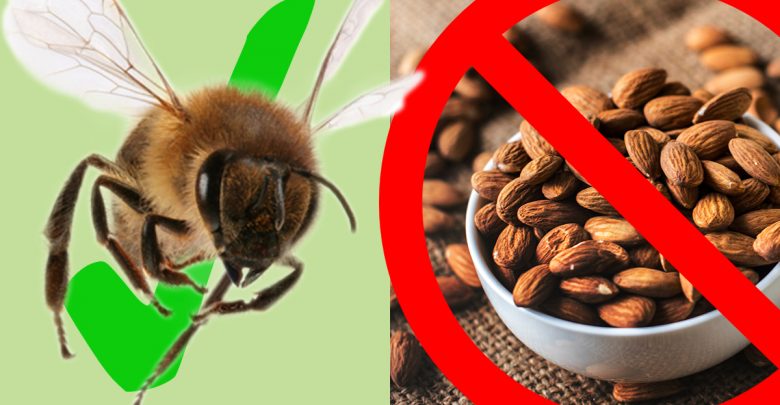Want to #savethebees? Avoid almond products
 Richard Bagan
Richard BaganAs many of us know, the bees are dying. Animal extinction is an important issue; sure, lots of species are going extinct lately, but why are bees?
To begin with, colony collapse disorder (CCD) has been one of the largest threats to the bee population for some time now. It causes entire hives disappear overnight, seemingly without cause, leaving only the queen and a few other bees to die. The cause is insofar unclear, though there has been speculation by scientists that disease, parasites like varroa mites, insecticides, change in habitat, and more may be contributing factors. Though there has been a decline in reports of CCD in the past five years, this may be due to the hive death rate of nearly 50 per cent per year, with numbers still remaining relatively high.
An interesting contributing factor to CCD is one you might not expect: almond groves in California. The over 1.3 million acre almond crop in California, which is responsible for producing about 70 per cent of the global almond market, is not only a huge drain on the California water supply, but may also be a large factor in the deaths of bees.
February is the month that the almond crop needs to be pollinated. The massive amount of space that the almond groves span could never be sustained by a natural bee population, so as a solution, many beekeepers travel from around the United States to pollinate these crops for money. This is necessary not only for the almonds, but also for the beekeepers’ livelihoods. Imports of honey, mainly from China, have flooded the domestic market, driving down prices and rendering sole income from honey harvesting almost impossible.
Despite taking every precaution against things like CCD and varroa mites to protect their livelihood, beekeepers still find they return from the almond fields with more problems than they arrived with. While the travel alone is stressful for the insects — which can be a contributing factor to CCD — there’s a far more dangerous aspect of their journey.
Because of the volume of bees travelling from across the country for the pollination, bees can be exposed to many diseases and threats that they would not be exposed to if they had stayed on their farm. If one group of bees is infested with mites or another parasite, they’re likely to pass it on to bees in the almond groves, causing it to spread across the country. In addition, there have been reports of beekeepers having their bee boxes stolen from the almond groves at night. All these factors contribute to the spread of disease, increasing population decline.
It’s difficult to pinpoint one particular element that’s causing bee deaths. There are many things to consider when we ask how we can staunch the death rate of bees, but certainly the California almond crop seems central to these concerns.
While we cannot get rid of the almond industry, we need to work on solutions that achieve higher bee survival rate. Because if we don’t, we’ll be working next on how to stop the rapid decline of other animal populations, namely our own.
There are many ways you can help to reduce your contribution to putting bees at risk. For instance, buying local honey as opposed to imported could give local beekeepers that little financial push they need in order not to rely on money from almond pollination.
And perhaps next time you’re in the grocery store pondering which brand of almond milk to buy, or what almond butter is best for school snacks, consider just skipping it instead.




